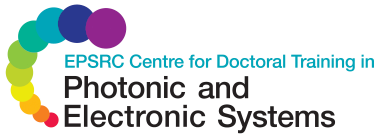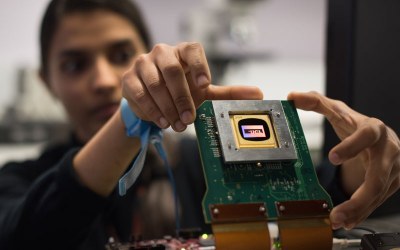Research Groups
The table below demonstrates the huge breadth of photonics research at both UCL and University of Cambridge.
IMAGE: PhD student doing research in the EMD group
Dramatic progress has been made in recent years in the field of photonic technologies. For example:
- The development of new screen and projection display technologies have brought higher resolution and lower power operation, enabling new ways of machine interaction.
- Advances in bio-photonics have led to a large range of low cost products for personal healthcare.
- Advances in low cost communication technologies to rates now in excess of 10 Gb/s have caused transceiver unit price cost reductions from >$10,000 to <$100.
- A large volume use of parallel photonics in computing has been realised commercially.
- Advances in polymers have made possible the formation of not just links, but complete optical subsystems, fully integrated within printed circuit boards. Industrial users can now expect to commoditise bespoke photonics technology themselves without having to resort to specialist photonics companies.
These advances have set the scene for a major change in commercialisation activity where photonics and electronics will converge in a wide range of information, sensing, and personal healthcare systems.
Photonics is rapidly becoming a fundamental underpinning technology for a great range of companies, both within and outside the conventional field of photonics.
Research Groups
Meet the Investigator / Research group
Find out more about the CDT Research groups in these short introductory videos.
Biomedical Optics Research Laboratory
by Prof Jem Hebden
Watch video
Centre for Photonic Devices and Sensors
by Prof Daping Chu
Watch video
Electronic Devices and Materials
by Prof Andrew Flewitt
Watch video
Centre for Photonics Systems Group, Cambridge
by Prof Richard Penty
Watch video
Photonics Group, UCL
by Prof Alwyn Seeds
Watch video
Centre of Molecular Materials for Photonics and Electronics, Cambridge
by Prof Tim Wilkinson
Watch video

